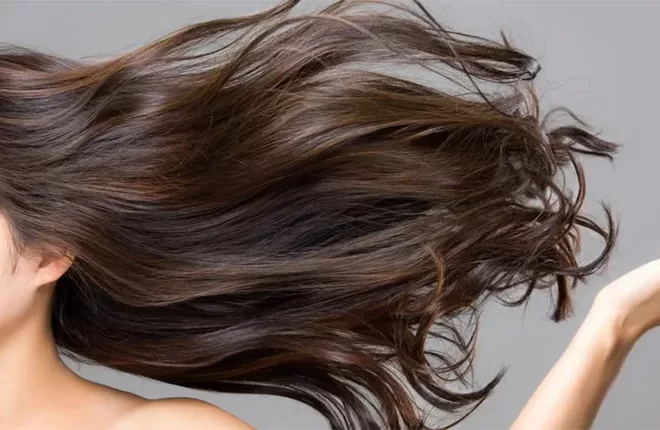What Is the Best Hair Oil in Dubai for Hair Growth?
Looking for the best hair oil in Dubai? Natural oils infused with Aloe Vera, Rosemary, Peppermint, Hibiscus, and Bhringraj can promote hair growth, reduce thinning, and improve scalp health.
- Aloe Vera: Soothes scalp, balances pH, and reduces dandruff.
- Fenugreek: Strengthens hair follicles and prevents thinning.
- Rosemary & Peppermint: Boost circulation for faster hair growth.
- Hibiscus & Lavender: Nourish, prevent greying, and add shine.
- Bhringraj: Known as the “king of herbs” for hair, supports thicker growth.
Choose a hair oil enriched with these ingredients for stronger, healthier hair naturally!
If you’ve experienced hair fall, thinning, or seeing a bald scalp underneath, do not worry since it happens to many, either as a result of stress, hormonal changes, or aging. But don’t go to the local shop, spend money buying high-priced treatments or chemical formulas when there is help. Nature has provided us with several flora that have been used for centuries to strengthen, thicken, and revitalize hair. In this blog, we are going to learn about the plants for hair growth that might be around you for so long and how you can use them to revive your locks naturally.

Aloe Vera:
Aloe Vera isn’t just for sunburns; it’s a hair powerhouse. It is soothing and moisturizing, which helps bring your scalp back to the proper pH balance, eliminates dandruff, and can even stimulate hair growth. Its enzymes repair dead skin cells in the scalp, and the anti-inflammatory property calms irritation and improves blood circulation, which in turn results in a healthier environment for the hair follicles.
How to use it for hair growth:
- Extract the gel from a leaf of aloe vera
- Apply it directly onto your scalp.
- Massage it gently for some time
- Leave it for around 30 minutes.
- Rinse off with lukewarm water.
This should be used 2-3 times a week for the best effects.

Fenugreek:
Fenugreek, or methi, is an integral part of the Indian kitchen but has been used as a natural hair growth remedy for centuries. The small seeds are rich in iron, protein, and essential vitamins that nourish hair follicles, stimulate new growth, and prevent hair thinning. Fenugreek also works great for preventing dandruff and maintaining the scalp’s oil production.
How to use it:
- Soak one tablespoon of fenugreek seeds for a few hours or overnight.
- Crush and grind them into a fine paste.
- Apply the paste to the scalp and hair and let it stay on your hair.
- Leave it for about 30-40 minutes.
- Rinse off with lukewarm water.
Do this 2 to 3 times a week for best results.
Rosemary:
Rosemary is a sweet-smelling herb that enhances the flavor of any culinary dish, but it’s not just an aromatic herb with culinary value; it also has natural healing properties that trigger hair growth. This herb accelerates blood flow to the scalp, thus encouraging hair follicles to grow. It slows down hair thinning as well as prevents early greying since it tends to increase blood flow around the scalp, which encourages better and thicker hair.
Ways to use it for hair growth:
- Add a few drops of rosemary essential oil into the carrier oil and massage it.
- Add a few drops in shampoo before applying it to your scalp.
- Add some Rosemary Herb into the boiling water and let it infuse before using for hair wash.
- Drink rosemary tea for good Scalp health.
You can choose any of the mentioned methods according to your convenience.
Peppermint:
Peppermint oil is refreshing in the herbal sense and also acts as a very good natural stimulant for the scalp. It’s menthol has proven to stimulate the increase in blood circulation which is directly related to hair growth. Researchers have seen that the 3% peppermint oil solution can increase hair growth than most of the treatment options. Peppermint will be able to energize your scalp to revitalize your hair.
How to use it:
- Dilute a couple of drops of peppermint essential oil with any carrier oil.
- Massage the oil into your scalp.
- Wash it off after about 15-20 minutes.
Use this treatment a couple of times a week for best results.
Hibiscus:
This particular flower, the Hibiscus, not only is beautiful but has other powerful elements that aid hair growth; it’s full of vitamins C and amino acids plus antioxidants. The hibiscus can nourish the scalp and strengthen one’s hair by preventing white graying early.
It usually forms the most common constituent in various hair oils as well as hair masks because it increases the thickness and the luster of hair.
How to apply:
- Crush a few flowers of hibiscus, and mix them with coconut oil.
- Apply on hair for a nourishing mask.
- Keep it for 30 to 45 minutes and then rinse out with mild shampoo.
Repeat once a week to restore shine and promote hair growth.

Lavender:
Lavender is great for your nerves, but it can do even better for your hair. It increases circulation and encourages the development of new hair follicles. Additionally, lavender has antimicrobial properties that are very helpful in keeping your scalp healthy, which is vital for optimal hair growth conditions. Soothing lavender can also help in alleviating stress, which is usually one of the causes of hair loss.
How to use it for hair growth:
- Blend a few drops of lavender essential oil with almond or jojoba carrier oil.
- Massage into your scalp.
- Let it stay on your scalp for 30 minutes
- Wash your hair with a mild shampoo.
Use it regularly to maintain healthy, thick, and voluminous hair.
False Daisy:
False Daisy is simply known as Bhringraj. In various Ayurvedic practices, the herb is considered to be called the “king of herbs” for hair. In Bhringraj, various nutrients are found like vitamins E, magnesium, and iron that are crucial for hair development. It also possesses cooling properties that help to balance the excess heat in the body that may cause hair fall.
How to use it for hair growth:
- Bhringraj oil is available in health stores and online. Apply the oil directly to your scalp and gently massage.
- Alternatively, you can apply its powder with water or coconut oil. This solution will have wonderful effects on your scalp.
Use it once a week for optimum results.

Concluding Thoughts: Nature Offers Hair Growth
Generations have trusted the plants above in helping grow hair and its general health. Though results are subjective to each individual, one could hope for thicker, stronger, and more vibrant hair if these natural remedies are integrated into one’s hair care. These plants are gentle yet effective in boosting one’s hair’s health naturally.
So, before spending a few dollars on that high-end hair serum or treatment, try to go green and tap into the power of nature for healthier, fuller hair.






